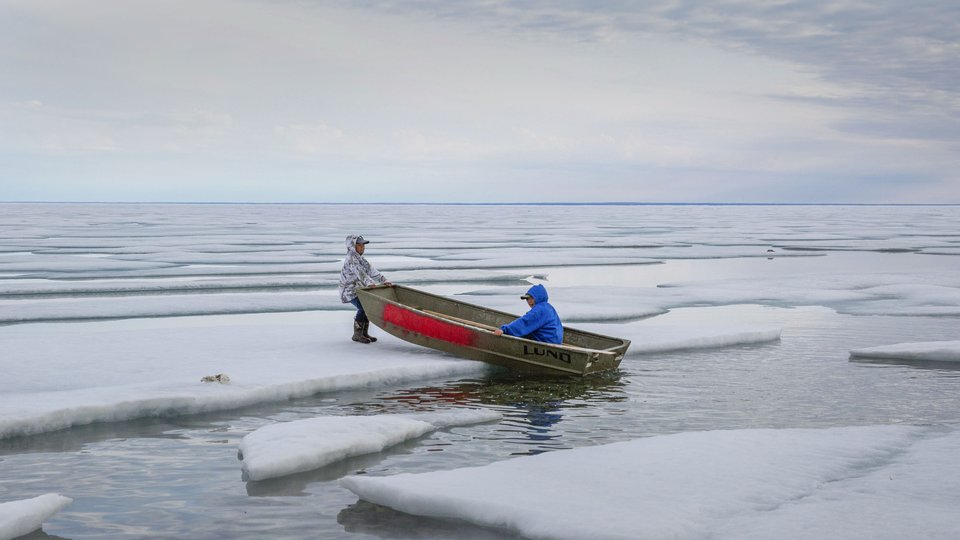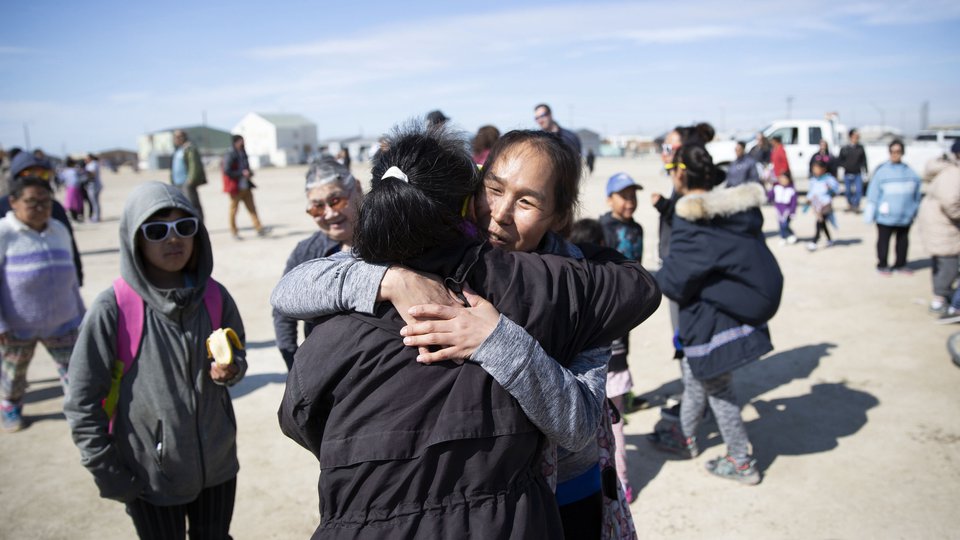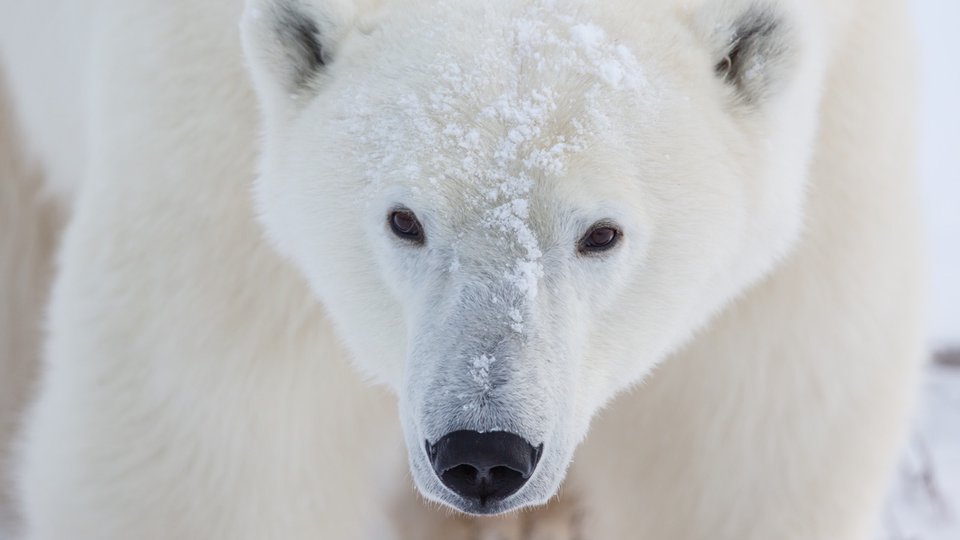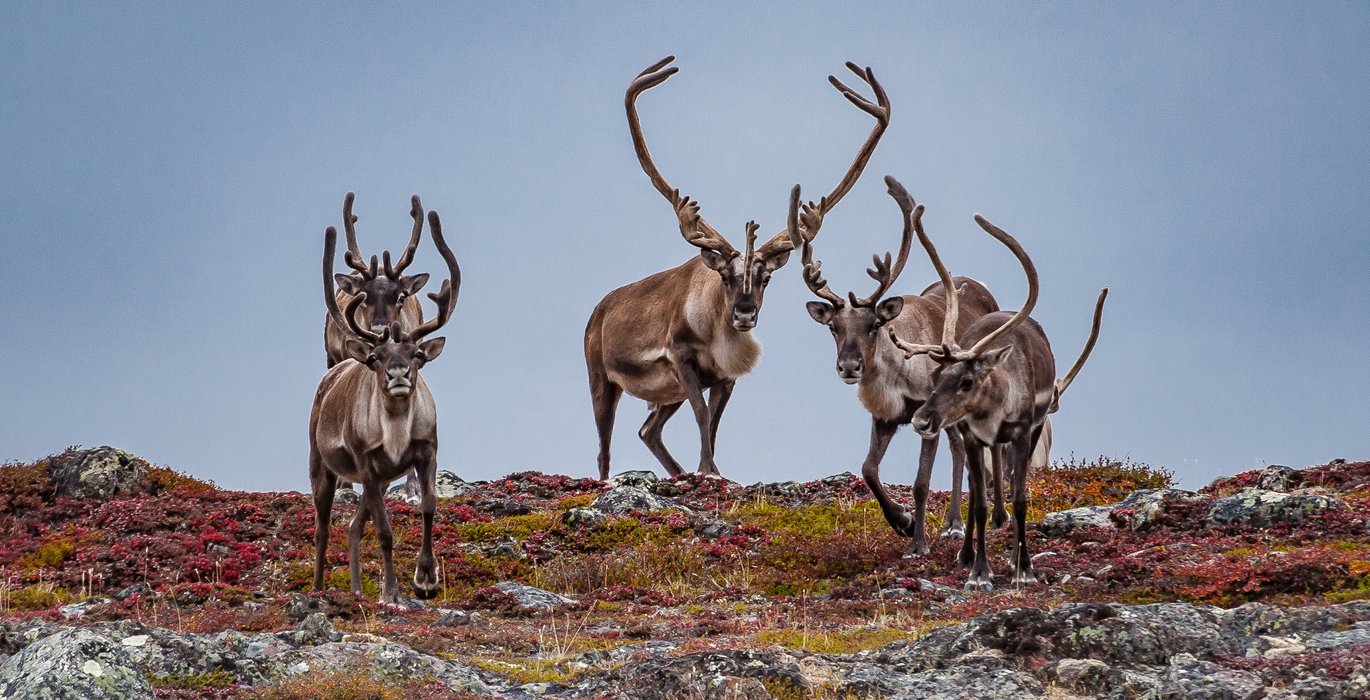
A recent study on the Fortymile caribou has gathered new insights into what the everyday life of the herd is like, data which may yield important information on how to best manage this once-endangered herd, the international, trilateral conservation of which has been a source of hope–and deep political controversy.
Unlike their boreal forest-dwelling cousins, woodland caribou, who generally remain in the same areas and live in small groups, barren-ground caribou such as the Fortymile herd inhabit vast stretches of tundra, across which they make vast yearly migrations.
At one time, the Fortymile herd numbered in the hundreds of thousands and migrated thousands of kilometers from the west of Fairbanks, across the Alaska-Yukon border into the Dawson region and as far south to the outskirts of Whitehorse. Near the end of the 19th century–a period coinciding with the influx of white Settlers drawn by the Klondike Gold Rush–the Fortymile caribou were said to be so numerous it took them days to cross the Yukon River once they were on the move. The earliest recorded “official” counts–meaning those done by Western scientific method–date to the 1920’s, when the herd was estimated to be nearly 570,000 animals strong.
By the 1930’s, however, the population nose-dived to a mere 10,000 animals. By 1974, it had dwindled to 4,000 animals, and ceased to migrate into the Yukon entirely.
In the 1990s, intensive international conservation efforts were put in place to help the herd recover, although not without considerable sacrifices–and conflict.
On the Alaska side, harvests were reduced to “quite conservative” levels, said Mike Suitor, a government of Yukon biologist who studies the herd, although Alaska continued to increase quotas as the herd’s population rebounded, in keeping with the state’s management policies, which place a premium on individual subsistence harvesting opportunities. On the Yukon side, however, hunting ceased entirely; not only did the Yukon government place a moratorium on harvesting the herd for non-Indigenous hunters in 1995, the Tr’ondëk Hwëch’in First Nation–for whom the caribou had been not only “one of the most important resources in the traditional territory” but a cultural touchstone–voluntarily refrained from taking any caribou at all.
Part of the reason the Yukon government and the Tr’ondëk Hwëch’in made this decision is due something called “predator pits,” said Suitor; when a herd is at a size proper to its environment, predators are still eating the caribou, but the herd continues to grow, but when the population drops below the predator pit threshold, normal predation begins to limit growth, keeping prey populations at or below replacement levels. This isa top-down depopulization pressure thought to also be a factor in the bust-boom cycle of snowshoe hare.
“There was the thought that this is what was happening with the Fortymile herd–that you just needed to increase the number of caribou, and once you get over that (threshold) the herd self-regulates,” said Suitor.
“A whole generation (of Tr’ondëk Hwëch’in) haven’t been able to harvest the Fortymile caribou for twenty years.”
Tr’ondëk Hwëch’in Chief Roberta Joseph
During this period, a wolf sterilization and culling program was also put in place, in an effort to further reduce pressure from predators on the herd. Alaska contends this program was “a vital aspect of increasing the size of the herd and maintaining high levels of harvest by people” although recent research suggests this had little if any impact on increasing the herd’s population.
Over time, conservation efforts paid off; the herd slowly rebounded, and the most recent official estimates, taken in July 2017, put the herd at around 84,000 animals.
In the 2010’s, however–around the time the herd exceeded 50,000 animals–biologists on both sides of the border began to notice “signals the herd was struggling,” said Suitor.
These signs manifested in lowered calf weights, both newborn and at the four-month marker, and in lowered rates of pregnancy, particularly among three year-old females–healthy female caribou, called cows, can begin having calves at this age, provided they are in good enough physical condition–along with changes to their migration routes.
“We could tell there was a lot going on (with the herd),” said Suitor. “We weren’t surprised the herd was stressed (because) it was getting bigger and bigger, and it only has so much habitat.”
In order to gather more information about what the herd was doing and eating, this apparent decline in herd health and how the herd was making–for lack of a better word–’choices’ about habitat, the Alaska Department of Fish and Game (ADFG), along with the Alaska Bureau of Land Management (BLM) and the Yukon’s department of environment took a rather novel approach; GPS camera collars that not only tracked the movements of the caribou, but recorded video of the animals, creating thousand of hours of what is essentially first-person POV footage of what it’s like to be to be a Fortymile caribou.
To this end, 15 female caribou were fitted with these camera GPS collars; these devices were programmed to collect information and then automatically fall off at a predetermined time, at which point they were located by their GPS signal and retrieved, said Jim Herriges, a wildlife biologist with BLM.
“This was really fun, because it was a first-of-it’s-kind opportunity to see (things) from the caribou perspective, instead of watching them from a distance or trying to keep up with them on foot, as so many diligent researchers have in the past,” said Libby Ehlers, a PhD candidate from the University of Montana.
Ehlers did the nitty-gritty work of analyzing the recorded data, which was collected over the herd’s summer grazing seasons of 2018 and 2019. The cameras collected nearly 200,000 individual videos, she said–an absolutely mind-blowing g amount of information to handle.

Photo: Adobe Stock
Using central limit theorem to help make such a tremendous amount of data more manageable, Ehlers selected a random subset of 18,000 videos. The analyzed data is still being studied to look at how various factors, such as diet, food availability and insect harassment (basically, when the bugs are so bad for caribou they affect the herd’s capacity to eat) impact habitat selection and herd density.
“These are the big questions,” she said.
Prior to the camera study, biologist had looked at the herd’s diet the good old fashioned way–through fecal pellet analysis, in which researchers analyze caribou droppings to determine what they were eating–which showed “the caribou were eating a lot of lichen, like an unbelievable amount” during the summer, said Suitor.
While lichen is a major food staple for caribou in the winter months, it’s a relatively low-quality forage, and caribou in their summer ranges, especially females with calves, would be expected to have a broader diet, with more shrubs and leaves, which have higher caloric and protein values.
That data “didn’t make a lot of sense,” said Herriges, because there isn’t that much lichen available in the Fortymile herd’s summer range, adding that there are “biases” in fecal pellet analysis, because some things survive the digestive tract better than others, which is part of why they started the camera collar study–for example, the camera study showed Fortymile caribou love mushrooms, especially boletes, which didn’t show up in fecal analysis at all.
One of the “surprising” things found through Ehlers work, said Suitor, was that it confirmed some of what the pellet analysis had detected–although it did change the picture somewhat. Through the camera data, biologist were able to quite literally see and confirm that the caribou were eating “a lot of lichen in their summer diet–a lot more than we expected,” said Suitor, but that they were also eating a lot more shrubs and grasses than their previous work had indicated.
“The study confirmed that lichen is one of the major food sources (for this herd), even in summer, when there is relatively little (lichen) available,” said Herriges.
“That has implications for… the density of the caribou that can be supported and the rate at which (the) range can recover from high population numbers, given that lichen is fairly low (density here) and easily depleted and slow growing.”
“BLM is a land management agency primarily, although in Alaska we get a little bit involved in subsistence harvest management… (includling) the Fortymile herd,” Herriges said, adding that his department had recently undertaken a “big picture” land management plan in the state, in which the Fortymile herd was obviously “big consideration.”
“Working with (Alaska) Fish and Game and the Yukon (department) of Environment, we’ve been trying to get a little bit better feel for habitat requirements (for the herd),” he said. “What really are the critical habitats? Of course, diet comes into that…and on top of all that there are big questions–and there still are, to some extent–around the appropriate population level to manage the herd.”
“That’s not really a BLM responsibility, but subsistence users have a big interest in that, and it’s a big topic for people both in Alaska and especially in the Yukon, I would say.”
That “subsistence use” boils down to who can and cannot harvest caribou from the herd, and when they can how many they can take–a long standing issue of conflict between not only Alaska and the Yukon, but also the Tr’ondëk Hwëch’in, who have arguably made the greatest sacrifices to protect the herd.
“A whole generation (of Tr’ondëk Hwëch’in folk) haven’t been able to harvest the Fortymile caribou for twenty years,” says Tr’ondëk Hwëch’in Chief Roberta Joseph. As a result, their “relationship” with the herd needs to be “reestablished,” she said.
Both Alaskan and Yukon management plans have, as their goals, maintaining a healthy Fortymile herd. The Alaskan plan puts a premium on increasing “the allowable harvest of the FCH as the herd grows” in so far as it is in keeping with the health of the herd, and providing “reasonable opportunity for Alaska subsistence uses.” The Yukon plan, by contrast, places importance on “maximizing herd use of habitat within the historic range of Yukon” and fulfilling, specifically, “the needs of Tr’ondëk Hwëch’in subsistence hunters within Tr’ondëk Hwëch’in Traditional Territory” in addition to subsistence hunting by other non-Tr’ondëk Hwëch’in hunters.
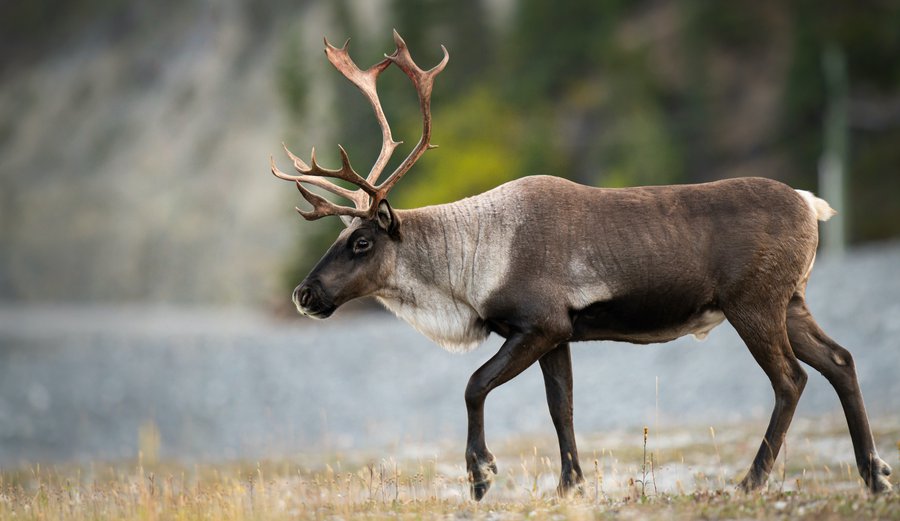
Photo: Adobe Stock
Alaska has been upping their harvest quotas for the last several years, something the Yukon government and the Tr’ondëk Hwëch’in have been in strong opposition too. At the core of this dispute is how big the herd ‘should’ be in order to be both healthy and to provide subsistence opportunities for both sides of the border.
Harvest of the Fortymile herd has reopened in Yukon as of 2020, although the process wasn’t exactly a smooth one. In 2020, the Yukon government angered the Tr’ondëk Hwëch’in by opening the hunt with a limited number permits to non-First Nation hunters for a January and August harvest, prior to the completion of a jointly agreed upon Fortymile Caribou Management plan, a move the First Nation argued was a violation of their Final Agreement with the territory.
The Yukon government, however, was facing pressure from their Alaskan counterparts, who said they would harvest caribou the Yukon didn’t, according to their own herd size management goals.
–-basically, a “use it or lose it” policy.
In 2020, the Alaskan harvest quota was set at 5,000 animals and a bag limit of two, with a reported harvest of 5,533 animals; in February 2021, the bag limit (the number of animals that can be harvested by a licensed individual hunter) was increased to three, and the total yearly harvest was 7,316.
In the same year, the Yukon issued only 380 Fortymile harvest permits. In the combined summer and winter hunting seasons in 2021, Yukon hunters took three caribou.
“The level of harvest that’s been taken (by Alaska) over the last few years, we don’t agree with that,” said Suitor. “We definitely agree there (needs to be) a harvest, but we think the level of harvest has been way too heavy.”
The official ADFG position is that the herd’s decline in health is the result of “compromised nutrition caused by overgrazing of its range.” They cite recent data which indicated animals in the herd were are in poor body condition, including calves with unacceptably low level of the body fat; October calf weights from 2017-2020 fell “significantly below the long term average three out of four years.” As a result, they’ve increased hunting in an effort to thin the herd, with the stated intention of slowing hunting again when it reaches approximately 50,000 animals, “allowing the range to recover and nutritional conditions to improve.”
“After reviewing all available data, managers concluded that the best strategy is to use hunter harvest to rapidly reduce the herd size to allow nutritional conditions to improve to the point of slowing or arresting the population decline,” the report reads.
In November 2020, the Yukon and Tr’ondëk Hwëch’in completed their own harvest management plan. In it, 65,000 caribou is cited as the baseline limit the Tr’ondëk Hwëch’in found to be a baseline for sustainable hunting in 2016.
An undated release from the Tr’ondëk Hwëch’in cites “over-hunting, loss of habitat, an increase in predators and poor game management,” as reasons for the herd’s initial decline, directly blaming the “governments (allowing) too many caribou to be hunted.” It also notes that “from the early 1900s, market hunting became an important income source,” and,” tonnes of meat were sold to Dawson butchers,” adding that then-Tr’ondëk Hwëch’in Chief Isaac “protested many times about how non-native hunters were overhunting the herd making it harder for First Nations people to earn a living.”
Joseph said she hopes for more regular quotas and increased harvest for her First Nation. She would also like to see the return of predator control measures, similar to the ones that took place during the height of conservation efforts during the 1990’s, and that she’d like to see more “thorough studies” done on the herd.
“Alaska had predation management in place for quite some time… I think that really contributed to the herd increasing,” she said.
“There’s a lot of mining–that’s one factor–but we also have climate change, that’s another big one...We’ve lost a lot of winter range to fire in the last 20 years. It’s really dramatic, when you look at the map.”
“The Fortymile caribou herd is a sacred food source for the Tr’ondëk Hwëch’in people,” Joseph said. “Our people used to really rely on it…there used to be thousands and animals crossing the (Yukon) River each year and there was never any sense of them declining.”
“They (ADFG and biologists) are saying (the caribou) are overeating their food sources and that’s why there’s a decline, but I don’t believe they are looking at all the (things) that could be contributing to the decline of the herd,” she said. “And so, in addition to increased harvests, there are a number of areas that need to be looked at again, and it would be great to be able to work cooperatively to take care of the herd, and to do what we can to increase the population, rather than focusing on the needs of men for hunting.”
Suitor said that it’s not reasonable to expect the herd’s numbers to reach the 500,000 mark they were said to have been at in the 1920’s. Caribou populations naturally fluctuate, and that number likely represents a highwater mark. The Porcupine caribou herd–one of the largest barren-ground herd in the world, with the longest land mammal migration in the world, traversing from the Northwest Territories into Northern Yukon and Alaska– is a good example of these fluctuations, he said.
“The Porcupine caribou…are at a high rate now–at last count we estimated about 280,000 caribou, but in the 2000s, we were at like 117,000 animals, something like that,” he said. That’s natural, these herds go up and down–but should we try to always manage the Porcupine caribou at 280,000? That’s not really reasonable. If we did, we’d never be happy except in the few years the herd did manage to get that big. It creates an expectation challenge that’s not really possible to meet.”
Still, 80,000 animals–or 50,000, where Alaska sees the herd as sustainable at this time–is a far cry from 500,000, and to complicate matters further the herd, despite its significantly recovered numbers, is still not returning to its Yukon range the way it had in the past. It has been hoped, Suitor said, that as animals became healthier and the population increased, the herd would expand back into that terrain–but that doesn’t seem to be happening here, which means that more animals are using the same range, which may be helping to create a population cap, making understanding what the herd is doing and eating even more important.
There could be a number of reasons for why the herd has changed its range, said Suitor. For one thing, “it’s hard to know what that habitat looked like a hundred years ago,” he said. There is a lot of “competing use” on the Yukon side of the herd’s range–Dawson, after all, was and continues to be a center of mining in the territory.
“There’s a lot of mining–that’s one factor–but we also have climate change, that’s another big one,” he said. “We’ve lost a lot of winter range to fire in the last 20 years. It’s really dramatic, when you look at the map.”
Part of Ehlers’ future work on the collar camera data will also focus on climate change, she said, specifically in how it impacts insect population and harassment, and how that in turn impacts herd health and where it chooses to be, but that study isn’t yet finished.
Although it’s easy to “get lost in the negatives” around the Fortymile herd, Suitor said the herd’s revival is still a success, the result of “amazing conservation efforts on both sides of the border.”
“We’ve brought this herd back from a few thousand animals, and that’s pretty awesome,” he said.
